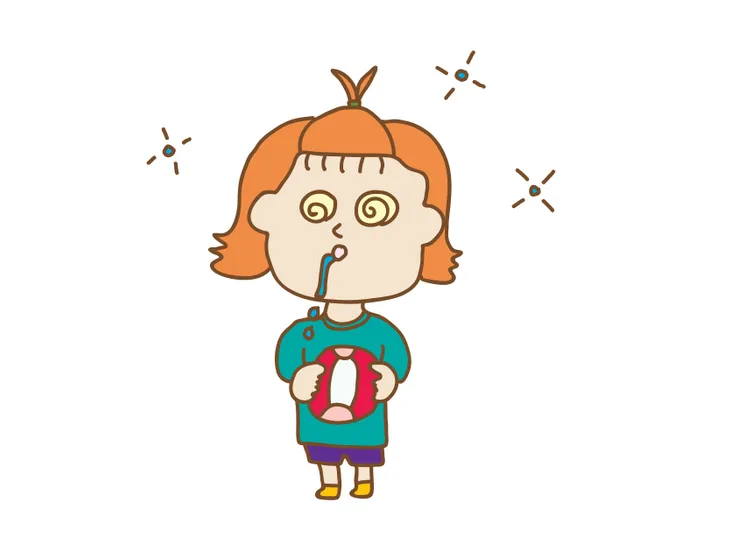Seizures can be alarming, and even more so when they occur in children. However, even the youngest among us aren’t immune to them.
While there are many types of seizures, there are some that are unique to children and infants in particular. Knowing what you’re dealing with can help you act appropriately and seek proper treatment. Here are 12 things to know about seizures in children…
The Many Seizure Triggers
The reasons your child is having a seizure are similar to why anyone at any age would have a seizure. It’s basically an overload of electrical impulses between neurons that overwhelm the brain.
WebMD says that anyone can have a seizure “under normal circumstances,” whether it’s from a fever, lack of oxygen, head trauma, or epilepsy. “In most cases – about seven out of 10 – the cause of the seizures can’t be identified,” adds the source.
How To Deal With The First Seizure
Seizures in children will never be easy or pleasant to deal with, but the first one can be particularly upsetting for caregivers. AboutKidsHealth.ca explains that isolated seizures don’t necessarily mean your child has epilepsy. It could be brought on by medication or illness.
The source adds that some episodes may appear to be seizures, but they are actually something else. In any case, record as much as you can about the event, so you can relay the information to a doctor, suggests the source.
Types of Seizures in Kids
John Hopkins Medicine breaks down the many types of seizures in children, adding that the types are determined by which area of the brain is affected. For example, focal seizures are limited to one area of the brain, and the child may experience an “aura” (including visual or hearing abnormalities) before the seizure itself.
Then, there are generalized seizures, which include both sides of the brain simultaneously. Within this category, you can find a variety of types of seizures, including absence seizures (which are brief), atonic seizures (sudden loss of muscle control), myoclonic seizures (sudden jerking of muscles), and infantile spasms, which is a “rare type of seizure disorder [that] occurs in infants usually before six months of age,” adds the source. Infants can apparently have hundreds of these episodes per day, and they have a serious underlying cause.
Not a Seizure at All
There’s actually a long list of “epilepsy imitators” from the International League Against Epilepsy. One of them is called “breath-holding attacks,” which usually results from being upset and causes a child’s face to turn blue with a possible short-term loss of consciousness.
Meanwhile, John Hopkins Medicine talks about “febrile seizures,” which it says are not associated with epilepsy. They are usually connected to a fever. These types of seizures are more common among children between the ages of 6-months and 5-years. “Febrile seizures that last less than 15 minutes are called simple, and typically do not have long-term neurological effects,” adds the source.
Symptoms of a Seizure
Like a seizure in adults, a seizure in a child can result in convulsions, which can be frightening for the child and the onlookers. “The child is often sleepy and confused after the seizure and does not remember the seizure afterward,” explains EMedicineHealth.com.
Meanwhile, during an absence seizure (also known as a petit mal) seizure, the child may just stare blankly for a short period of time with a loss of awareness but without any violent movements. During complex partial seizures, the child often displays behavior such as “chewing, lip smacking, or clapping, followed by confusion,” adds the source. There can also be isolated muscle spasms that move to different muscle groups, as seen during partial seizures (sometimes called march seizures).
How to Know For Sure
Since there are many conditions that may mimic epilepsy, it’s important to get a proper diagnosis from a doctor. A medical professional will typically diagnose a child with epilepsy when there are repeated seizures without an obvious underlying cause, such as a fever or injury, says HealthyChildren.org.
A doctor will record a detailed medical history, details of the seizure(s), perform a physical examination and blood tests, along with a possible computed tomography (CT) scan or magnetic resonance imaging (MRI) to evaluate the cause.
Learn the Seizure Triggers
While many seizures in children “happen randomly, with no obvious pattern,” notes the Epilepsy Foundation, there are some possible triggers to look out for. Even a missed dose of medication (or taking the incorrect amount) can cause a seizure in a child diagnosed with epilepsy.
Other triggers for seizures in children include flashing or flickering lights, which can be present in video games. High contrast patterns and “mental processes,” such as reading or math, have also been known to trigger seizures. Consider keeping track of any foods your child is eating before an episode, as this also may be a clue as to what’s causing the seizures.
Your Reaction is Important
How you respond to your child’s seizure can affect the outcome. While the seizure can look terrifying, in most cases, first aid is not required, explains AboutKidsHealth.com. “The most important things to do for any type of seizure are to remain calm and keep your child safe,” says the source.
In the case of tonic-clonic seizures, which are often intense, you can help by reassuring others around the patient that it’s under control, says the source. Be mindful if there are any dangers around the patient, for example, anything that’s sharp, a hot stove, or moving traffic. Don’t try to control their movements, but do put a soft blanket or jacket under their head.
Use All Recording Methods
On top of recording details about your child’s seizures on paper, also consider getting yourself a video camera (or just use your smartphone) to record the episode while it’s happening to show your doctor, suggests WebMD. This may seem counterintuitive at the time, but it can show your doctor first-hand so nothing is lost in your written or verbal description.
Consult other family members about what transpires during a seizure if they witness it, as “siblings of children with epilepsy, even very young kids, may notice things about the seizures that parents may not,” adds the source.
There Can Be Pain Afterwards
The pain your child may experience from the seizure will likely be apparent following the episode. Remember, during a violent seizure a child may cry out, fall down and convulse, but they’re not aware of it, explains AboutKidsHealth.com.
However, when the seizure is done, some young patients may complain of head or stomach pain. They might have also bitten their tongue during the episode, which can obviously be sore as well. If there are any aches and pains following a seizure, you can ask a medical professional if it’s okay to administer over-the-counter pain medications.
The Long-Term Outlook
EveryDayHealth.com explains, “The long-term effects of seizures depend on the type of seizures a child has and how well the seizures can be controlled.” With that being said, even kids with mild forms of epilepsy can experience problems focusing their attention and processing information.
Infantile spasms can have a “profound effect on development,” notes the source, and can literally take the smile off a child’s face for the unforeseeable future. For the most part, epilepsy doesn’t impact the ability for a child to thrive, but it also depends on the other related or unrelated health issues.
Treating Child Seizures
The first line of defense against repeated seizures in children is antiepileptic medications, explains Nationwide Children’s Hospital. However, these medications do not completely remove the risk of a seizure and need to be taken on an ongoing basis.
The medication dosage may need to be adjusted if it’s not working properly, adds the source. If the drugs prove to be ineffective, there are other approaches, such as diet therapies (such as the Ketogenic Diet and Modified Atkins Diet), which limit carbohydrates under the direction of a dietician. There’s also vagal nerve stimulation to stimulate the brain and reduce seizures, although this is not considered an alternative to medications. Surgery is also an option to remove the affected area of the brain, but this is usually a final option and not suitable for all patients.















